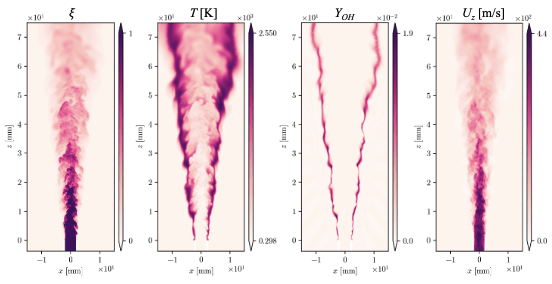Training | Computational Fluid Dynamics | Combustion, High Performance Computing, Mécanique des fluides
Required Education : Master ou ingénieur
Start date : 5 February 2024
Mission duration : six mois
Deadline for applications : 24 January 2024
Gratification : 650 EUros nets /mois
The safety of the hydrogen-powered aircraft of the future depends on drastic control of safety and, in particular, of potential flames linked to a hydrogen leak from a tank, pipe or any element containing pressurized hydrogen.
CERFACS is developing a major simulation project in collaboration with Airbus to study all possible scenarios when hydrogen escapes from an orifice into the open air or into a cavity. An essential tool for tackling these problems is simulation, using the AVBP code. These are simulations of jet flames, which are often supersonic because the upstream pressures are so high. We use large-scale simulation and compare the results with experiments set up in partner CNRS laboratories.

The trainee will be integrated into this scheme. He or she will learn about AVBP, combustion, LES, H2 safety and its aeronautical applications. They will simulate H2 jet flames, mainly supersonic. A strong motivation for aeronautics is required. Experience in large CFD codes, parallel computing, combustion and fluid mechanics is desirable, as is an interest in theory and physics.
After the internship, a thesis in collaboration with Airbus on this theme will be available in October 2024 if the candidate demonstrates his/her ability and motivation.
Contacts:
T. Jaravel (jaravel@cerfacs.fr)
Q. Douasbin (qdouasbin@cerfacs.fr)
T. Poinsot (poinsot@cerfacs.fr)

